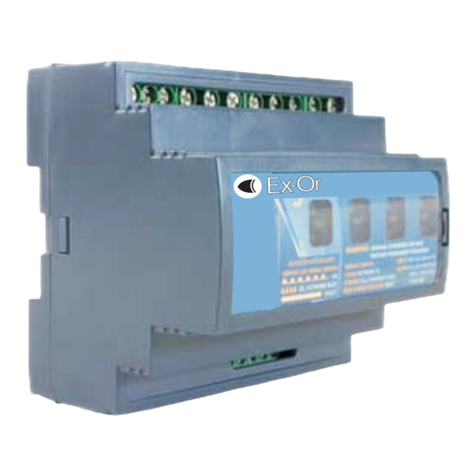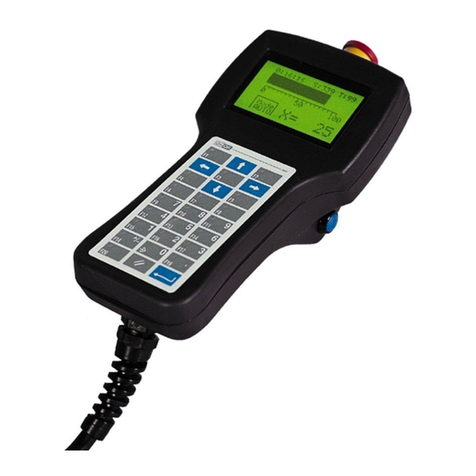ptn0723 X5 Quickstart Guide
©2021 EXOR International S.p.A. - Subject to change without notice
exorint.com 3
TABLE OF CONTENTS
1Introduction.................................................................................................................................5
1.1 Requirements ....................................................................................................................5
1.2 Key Shortcuts in X5 Handheld........................................................................................5
2Security Features .......................................................................................................................6
3Examples of System Configuration........................................................................................7
3.1 Client/Server Configuration (JMobile Client on Handheld).......................................7
3.2 JMobile Runtime on Handheld.......................................................................................8
4How to Set-up a Minimal X5 System for Demonstration Purposes.................................9
4.1 Wiring the Base Station................................................................................................. 10
4.2 Configuring X5 Base Station........................................................................................ 11
4.3 Configuring X5 Wireless Handheld............................................................................. 13
5Device Publisher...................................................................................................................... 16
5.1 Forwarding Device Publisher Information to PLC/Controller ................................ 17
5.2 How to Receive Data from Device Publisher ............................................................ 18
6More on Using X5.................................................................................................................... 19
6.1 Pressing Multiple Keys in X5 Handheld ..................................................................... 19
6.2 Purpose of Auxiliary Input ............................................................................................ 19
6.3 Use VNC Client for Easier Access to BS and Handheld.......................................... 19
6.4 Connect Base Station to a Controller/PLC................................................................ 20
6.5 Manually Flash Pairing Lamp ...................................................................................... 20
6.6 List Sorting Options in Pairing App............................................................................. 20
6.7 Using NFC as Pairing Selection Accelerator............................................................. 21
6.8 Importing/Exporting Base Station Lists..................................................................... 22
6.8.1 Export Base Station List .................................................................................. 22
6.8.2 Import Base Station List.................................................................................. 23
6.9 System Variables ........................................................................................................... 23
6.10Haptic Response............................................................................................................ 23





























